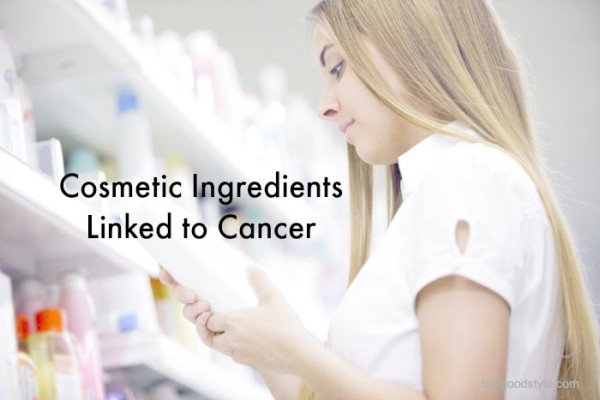It’s October. Breast Cancer Awareness month. Rather than purchasing pink stuff or items from your local department store beauty counter marked with the ribbon, I encourage you to do something that really makes a difference.
What’s that?
Educate yourself on how to live your healthiest life. One way to do that is avoiding products that contain ingredients linked to cancer.
Cosmetic Ingredients Linked to Cancer
DEA, TEA A foaming agent and emulsifier used in products like shampoos and body washes that can form carcinogenic compounds when mixed with other nitrosating ingredients. Look for: DEA or Diethanolimine, TEA or Triethanolamine, Cocamide DEA or Cocamide Diethanolimine, Lauramide DEA or Lauramide Diethanolimine, DEA Lauryl Sulphate or Diethanolimine Sulfate, Linoleaide DEA or Linoleaide Diethanolimine, Oleamide DEA or Oleamide Diethanolimine.
Formaldehyde A carcinogenic impurity released by some chemical preservatives, commonly found in nail polish, deodorant, and shampoo. Look for: Formaldehyde, Formalin, Urea, Diazolidinyl urea, Imidazolidinyl urea, DMDM hydantoin, Quaternium-15, 2-bromo-2-nitropropane-1,3-diol, and Sodium hydroxylmethylglycinate.
Heavy Metals (Metalloestrogens) Endocrine disruptors and possible carcinogens used in cosmetics and personal care products as a sweat blocker, colorant, whitener, or lightener. Found in lip products, whitening toothpaste, eyeliner, nail color, foundations, sunscreens, eye shadows, blush, concealer, moisturizers, eye drops. Look for: Aluminum, Aluminium flake, Aluminum, LB Pigment 5; Pigment metal 1; A 00; A 95; A 995; A 999; AA 1099; AA1199, Lead acetate, Lead flake, Chromium, Thimerosal, Hydrogenated cotton seed oil, Sodium hexametaphosphate.
Parabens These chemical preservatives are not currently thought to be carcinogenic, but have been found to accumulate in tissue and may accelerate tumor growth. Used in soap, skincare, body care, hair care, toothpaste, deodorant. Look for: alkyl parahydroxybenzoate, butylparaben, methylparaben, ethylparaben, propylparaben, isobutylparabens. Read more on parabens and why to avoid them.
Petrolatum Widely used as an emollient or lubricant, this ingredient contains impurities linked to cancer. Commonly found in skincare, body care, lip balm, and makeup. Look for: petrolatum, petroleum jelly, mineral oil.
Phthalates Often used as a carrier for synthetic fragrance, phthalates are thought to be a possible carcinogen by the World Health Organization. Found in products like hair spray, lipstick, perfume, and nail polish. Look for: Benzylbutyl phthalate (BzBP), Di-n-butyl phthalate or Dibutyl phthalate (DBP), Diethyl phthalate (DEP), perfume, parfum, and sometimes fragrance. Learn more about the fragrance issue.
1,4 Dioxane A carcinogenic chemical by-product of petro-ingredient processing. Found in shampoo, facial cleansers, body wash, bubble bath, baby bath, and liquid soap. Because 1,4 Dioxane is a contaminant produced during the manufacturing process, FDA does not require it to be listed on a product ingredient listing. Look for: ingredients which may contain 1,4 Dioxane, identifiable by the prefix or designations of ‘PEG,’ ‘–eth–,’ ‘Polyethylene,’ ‘Polyethylene glycol’ ‘Polyoxyethylene,’ or ‘–oxynol–’ (FDA 2007).
If you’d still like to support the cause, donate your time or money to an organization committed to research who spend their dollars wisely. And please, avoid your department store beauty counter. Earning money for BCA by selling products that are loaded with toxic chemicals, some of which actually cause cancer, is counterproductive in my book.
[Woman reading label image via Shutterstock]


